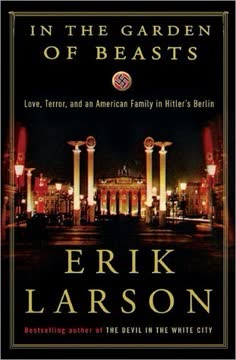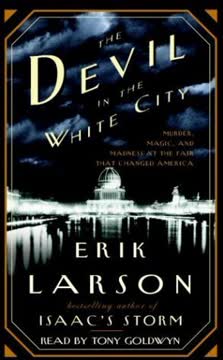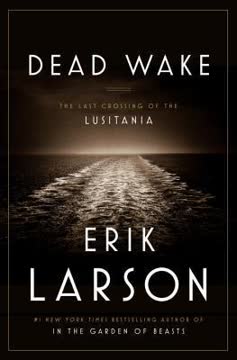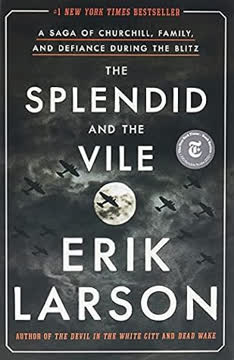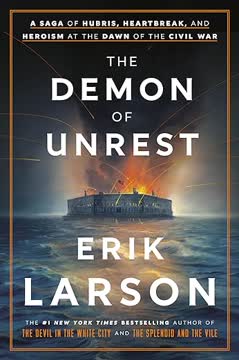Key Takeaways
1. An Outsider's Descent into Hitler's Berlin
Once, at the dawn of a very dark time, an American father and daughter found themselves suddenly transported from their snug home in Chicago to the heart of Hitler’s Berlin.
Unexpected Appointment. William E. Dodd, a history professor from Chicago, is surprisingly appointed as the U.S. Ambassador to Germany in 1933. Neither wealthy nor politically connected, Dodd's selection is driven by President Roosevelt's desire to have a liberal voice in Berlin. He brings his family, including his daughter Martha, into a country undergoing a brutal transformation under Adolf Hitler.
Initial Misgivings. Dodd is hesitant, prioritizing his academic work and fearing the demands of diplomacy. However, a sense of duty and the allure of a unique experience for his family compel him to accept. The family arrives in a Berlin that seems deceptively normal, masking the underlying currents of violence and oppression.
A City of Contrasts. The Dodds find themselves in a city of stark contrasts: grand boulevards adorned with Nazi banners, outdoor cafes frequented by SS officers, and homes lush with red geraniums. They are thrust into a world of diplomatic dinners with Goebbels and Göring, juxtaposed with the growing awareness of the regime's brutality.
2. The Allure and Peril of Nazi Germany
Every morning they moved through a city hung with immense banners of red, white, and black; they sat at the same outdoor cafés as did the lean, black-suited members of Hitler’s SS, and now and then they caught sight of Hitler himself, a smallish man in a large, open Mercedes.
Deceptive Facade. Nazi Germany presents a seductive facade to outsiders, masking the underlying terror and oppression. The Dodds, like many visitors, initially struggle to reconcile the reports of violence with the seemingly normal daily life. This normalcy is a deliberate tactic by the Nazi regime to project an image of stability and strength.
Gleichschaltung. The process of "Coordination" (Gleichschaltung) rapidly transforms German society, bringing all aspects of life under Nazi control. This includes the implementation of the "Aryan clause," banning Jews from government jobs, and the suppression of free press. The Hitler salute becomes ubiquitous, a constant reminder of the regime's power.
The Seduction of Power. The allure of Nazi Germany lies in its promise of national revival and order, particularly appealing in the wake of the economic depression and political instability. This seduction blinds many to the true nature of the regime and its long-term goals.
3. Dodd's Naiveté and the Unfolding Horror
I have always wondered what it would have been like for an outsider to have witnessed firsthand the gathering dark of Hitler’s rule.
Initial Optimism. Ambassador Dodd initially believes in the possibility of moderating Hitler's regime through reason and diplomacy. He sees signs of moderation among some government officials and hopes to exert a positive influence. This optimism is fueled by his Jeffersonian ideals and his belief in the inherent rationality of men.
The Jewish Question. Dodd is tasked with addressing the "Jewish problem," but Roosevelt makes it clear that this is not a governmental affair. Dodd is instructed to protect American citizens who are victimized and to use personal influence to moderate the persecution. He struggles to reconcile his own sense of justice with the political realities and the prevailing anti-Semitic sentiments in America.
Growing Disillusionment. As Dodd witnesses the escalating violence and oppression, his initial optimism begins to wane. He reads Consul General Messersmith's dispatches, which paint a grim picture of Germany's descent into dictatorship. He encounters victims of Nazi brutality and hears firsthand accounts of persecution.
4. Martha's Entanglement: Love, Politics, and Danger
They knew Goebbels and Göring as social acquaintances with whom they dined, danced, and joked—until, as their first year reached its end, an event occurred that proved to be one of the most significant in revealing the true character of Hitler and that laid the keystone for the decade to come.
A Young Woman's Perspective. Martha Dodd, initially captivated by the energy and excitement of Berlin, becomes entangled in a web of romantic and political relationships. She is courted by Nazi officials, diplomats, and journalists, each offering a different perspective on the unfolding events. Her initial naiveté gradually gives way to a growing awareness of the regime's true nature.
Affairs and Intrigue. Martha's romantic life becomes intertwined with the political intrigue of Berlin. She has affairs with various men, including Nazi official Ernst Hanfstaengl and Soviet diplomat Boris Winogradov. These relationships expose her to different ideologies and perspectives, further complicating her understanding of the situation.
The Gestapo Chief. Martha's relationship with Rudolf Diels, the head of the Gestapo, is particularly significant. It provides her with an insider's view of the regime's inner workings and the pervasive atmosphere of fear and surveillance. She begins to see the human cost of the Nazi revolution and the moral compromises required to survive in this world.
5. The Night of the Long Knives: A Turning Point
For both father and daughter it changed everything.
A Bloody Purge. The Night of the Long Knives, a series of extrajudicial executions carried out by the Nazi regime in the summer of 1934, marks a turning point for the Dodds. The violence and brutality of the purge shatter any remaining illusions about the possibility of moderating Hitler's regime. The event reveals the true ruthlessness of the Nazi leadership and their willingness to eliminate any perceived threat to their power.
Personal Impact. The purge has a profound impact on both William and Martha Dodd. William is horrified by the violence and begins to question his role as ambassador. Martha is forced to confront the moral implications of her relationships with Nazi officials and the complicity of those who stood by and watched.
A World Transformed. The Night of the Long Knives solidifies Hitler's power and marks a significant escalation in the regime's brutality. It becomes clear that Germany is on a path toward war and that the world must take notice.
6. The Erosion of Freedom and the Rise of Terror
These were complicated people moving through a complicated time, before the monsters declared their true nature.
The Slow Creep of Oppression. The Dodds witness the gradual erosion of freedom and the rise of terror in Germany. They see the implementation of discriminatory laws, the suppression of dissent, and the increasing control of the state over all aspects of life. The atmosphere of fear and suspicion permeates every corner of society.
The Power of Propaganda. The Nazi regime skillfully uses propaganda to manipulate public opinion and maintain control. The Dodds observe the constant stream of misinformation and the suppression of dissenting voices. They see how easily people can be swayed by fear and nationalism.
The Complicity of Silence. The Dodds are troubled by the silence of many Germans in the face of injustice. They see how fear and self-preservation can lead people to compromise their values and turn a blind eye to the suffering of others. This complicity becomes a defining characteristic of the Nazi era.
7. Dodd's Transformation: From Diplomat to Dissenter
I have always wondered what it would have been like for an outsider to have witnessed firsthand the gathering dark of Hitler’s rule.
A Moral Awakening. Ambassador Dodd undergoes a significant transformation during his time in Berlin. Initially hopeful and optimistic, he becomes increasingly disillusioned and critical of the Nazi regime. He begins to see the true nature of Hitler and his followers and the dangers they pose to the world.
Speaking Truth to Power. Dodd's growing opposition to the Nazi regime puts him at odds with the State Department, which favors a more cautious approach. He becomes increasingly isolated and marginalized, but he refuses to compromise his principles. He uses his position to warn of the dangers of Hitler and to advocate for a stronger American response.
A Voice in the Wilderness. Upon his return to America, Dodd becomes a vocal critic of appeasement and a champion of international cooperation. He uses his knowledge and experience to educate the public about the threat of Nazism and to urge the United States to take a more active role in world affairs.
8. The Looming Shadow of War and the Loss of Innocence
Beneath the gore and smoke and loam, this book is about the evanescence of life, and why some men choose to fill their brief allotment of time engaging the impossible, others in the manufacture of sorrow.
The Inevitability of Conflict. As the Dodds' time in Berlin progresses, the shadow of war looms ever larger. They witness Germany's rearmament, its aggressive foreign policy, and its growing hostility toward other nations. It becomes clear that a major conflict is inevitable.
The Loss of Innocence. The Dodds' experience in Berlin marks a loss of innocence for both father and daughter. They are forced to confront the dark side of human nature and the fragility of civilization. They learn that evil can triumph when good people do nothing.
A Warning for the Future. The story of the Dodds in Berlin serves as a cautionary tale about the dangers of appeasement, the importance of standing up to tyranny, and the need for vigilance in the face of evil. It is a reminder that the lessons of history must be learned and applied to the challenges of the present.
Last updated:
FAQ
What is In the Garden of Beasts by Erik Larson about?
- Historical narrative focus: The book chronicles the experiences of William E. Dodd, the U.S. ambassador to Germany, and his family, especially his daughter Martha, as they live in Berlin during Hitler’s rise to power from 1933 to 1937.
- Personal and political lens: It provides an intimate, ground-level view of the early years of the Third Reich, blending diplomatic history with the personal stories and moral dilemmas faced by the Dodds.
- Key events and themes: Major events such as the Night of the Long Knives, the Reichstag fire trial, and the increasing terror under Nazi rule are explored, revealing the tension between ordinary life and the encroaching darkness of totalitarianism.
- Purpose and tone: Erik Larson aims to humanize history, showing how individuals navigated the complexities and dangers of Nazi Germany, and how the world failed to recognize the true threat posed by Hitler.
Why should I read In the Garden of Beasts by Erik Larson?
- Unique perspective: The book offers a rare, firsthand account of Nazi Germany’s transformation through the eyes of an American diplomatic family, making history vivid and personal.
- Relevance to today: It serves as a cautionary tale about the dangers of appeasement, denial, and the gradual erosion of freedoms under authoritarian regimes.
- Engaging storytelling: Larson’s narrative style combines meticulous research with compelling storytelling, making complex historical events accessible and emotionally resonant.
- Insight into moral choices: The book explores the moral ambiguities and personal costs of living under tyranny, prompting readers to reflect on courage, complicity, and resistance.
Who are the main characters in In the Garden of Beasts by Erik Larson, and what roles do they play?
- William E. Dodd: The U.S. ambassador to Germany, a principled academic who struggles with diplomatic isolation, moral dilemmas, and the brutality of the Nazi regime.
- Martha Dodd: Dodd’s daughter, whose social and romantic entanglements in Berlin’s elite circles provide a personal lens on the era’s political and cultural upheaval.
- Rudolf Diels: The first chief of the Gestapo, whose relationship with Martha and internal Nazi power struggles highlight the regime’s paranoia and violence.
- Supporting figures: Key individuals include Consul General George Messersmith, Nazi officials like Göring and Himmler, and Martha’s Soviet lover Boris Winogradov, all illustrating the era’s intrigue and danger.
How does Erik Larson depict the political and social atmosphere of Berlin in In the Garden of Beasts?
- Atmosphere of fear: Berlin is portrayed as a city under constant surveillance, where fear, denunciations, and Gestapo repression are pervasive.
- Contradictory social life: Despite the terror, diplomatic and social gatherings continue, marked by underlying tension and the ever-present threat of arrest or violence.
- Rapid transformation: The regime’s campaign of Gleichschaltung brings all aspects of society into line with Nazi ideology, often through coercion and propaganda.
- Power struggles: The book details infighting within the Nazi Party, with shifting alliances and purges shaping the regime’s direction.
What challenges did Ambassador William E. Dodd face in Nazi Germany, according to Erik Larson?
- Diplomatic isolation: Dodd’s modest background and principled stance alienated him from both the elite diplomatic corps and the Nazi authorities.
- Moral dilemmas: He struggled with how to respond to Nazi atrocities, balancing diplomatic protocol with his revulsion at the regime’s brutality.
- Internal opposition: Dodd faced resistance from the U.S. State Department, which often prioritized business interests and appeasement over confronting Nazi abuses.
- Personal toll: The stress and frustration of his post affected his health and morale, leading to a sense of futility and isolation.
How is Martha Dodd’s experience and evolution portrayed in In the Garden of Beasts by Erik Larson?
- Initial enthusiasm: Martha is initially captivated by Berlin’s vibrancy and the apparent energy of the Nazi revolution, dismissing early reports of violence.
- Social and romantic entanglements: She becomes deeply involved in Berlin’s social scene, forming relationships with Nazi officials, diplomats, and a Soviet agent.
- Gradual disillusionment: Exposure to the regime’s brutality and internal conspiracies leads Martha to skepticism and eventual revulsion.
- Espionage and legacy: Her involvement with Soviet intelligence and later life in exile reflect the personal and political complexities of the era.
What was the Night of the Long Knives, and how does In the Garden of Beasts portray this event?
- Violent purge: The Night of the Long Knives (June 30–July 2, 1934) was a brutal purge ordered by Hitler to eliminate the SA leadership and other political opponents.
- Atmosphere of terror: The book details the anxiety and confusion in Berlin as arrests and executions unfolded, shocking both German society and the diplomatic community.
- Consolidation of power: The purge marked a decisive shift, strengthening Hitler’s control and demonstrating his willingness to use extrajudicial violence.
- Public and diplomatic reaction: Despite the horror, many Germans welcomed the purge as a relief from SA excesses, while foreign governments largely remained silent.
How does In the Garden of Beasts by Erik Larson explore the use of propaganda and public spectacle by the Nazi regime?
- Mass rallies and symbolism: The book describes orchestrated Nazi rallies, parades, and public demonstrations designed to unify and intimidate the population.
- Cultural control: The regime imposed strict regulations on cultural institutions, professions, and even language, aiming to reshape society in line with Nazi ideals.
- Manipulation of perception: Nazi officials cultivated relationships with foreign diplomats and journalists to project an image of normalcy and progress, masking underlying brutality.
- Impact on outsiders: Many visitors and diplomats were initially deceived by the regime’s hospitality and staged events, underestimating the true extent of repression.
What role did espionage and intelligence play in the lives of the Dodds, especially Martha, in In the Garden of Beasts?
- Martha’s recruitment: Martha Dodd was approached and recruited by Soviet intelligence (NKVD), partly through her relationship with Boris Winogradov, a Soviet agent.
- Web of intrigue: The Dodds’ social circle included diplomats, spies, and Nazi officials, creating a complex environment of surveillance and suspicion.
- Blurred loyalties: Martha’s espionage activities and personal relationships illustrate the ambiguous boundaries between personal and political loyalties in Berlin.
- Long-term consequences: Espionage added strain to the family and shaped Martha’s later life as a communist sympathizer and exile.
How does In the Garden of Beasts by Erik Larson address the persecution of Jews and the “Jewish Problem” in Nazi Germany?
- Escalating persecution: The book chronicles the gradual imposition of anti-Jewish laws, social restrictions, and public humiliations, leading to systemic discrimination.
- Diplomatic response: Dodd struggled with how to protest Nazi abuses against Jews, often favoring private protests over public condemnation, which drew criticism from some quarters.
- Atmosphere of fear: Jewish citizens faced increasing isolation, violence, and danger, with many seeking ways to emigrate or survive under the regime.
- International indifference: The narrative highlights the world’s reluctance to confront or intervene in the face of growing anti-Semitic policies.
What are the key themes and takeaways from In the Garden of Beasts by Erik Larson?
- Dangers of appeasement: The book warns of the consequences of ignoring or rationalizing evil for political convenience, as seen in the international community’s response to Hitler.
- Moral complexity: It explores the ambiguities of personal and political choices under tyranny, showing how ordinary people navigated fear, complicity, and resistance.
- Humanizing history: By focusing on the Dodds and their acquaintances, Larson brings historical events to life through individual experiences and dilemmas.
- Legacy of resistance: The story honors those who opposed Nazism, highlighting the courage and tragedy of their efforts.
How did Erik Larson research In the Garden of Beasts, and what sources did he use?
- Extensive archival research: Larson drew on primary sources such as William E. Dodd’s diary, Martha Dodd’s memoirs, diplomatic correspondence, and intelligence files.
- Diverse collections: He accessed materials from the Library of Congress, National Archives, Wisconsin Historical Society, Harvard, Yale, and other institutions.
- Personal accounts: The use of memoirs, letters, and firsthand testimonies provides depth and authenticity to the narrative.
- Meticulous documentation: Larson’s comprehensive research underpins the book’s detailed and nuanced portrayal of events and personalities.
Review Summary
In the Garden of Beasts offers a compelling look at Nazi Germany through the eyes of U.S. Ambassador William Dodd and his family. Larson skillfully weaves historical facts with personal narratives, creating a vivid portrayal of 1930s Berlin. The book explores the gradual realization of Hitler's true intentions and the world's failure to act. While some readers found it slow-paced or overly focused on Martha Dodd's romantic escapades, many praised Larson's ability to humanize historical figures and provide insight into a crucial period of history.
Similar Books
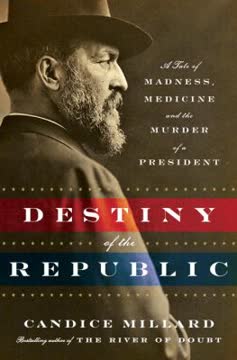

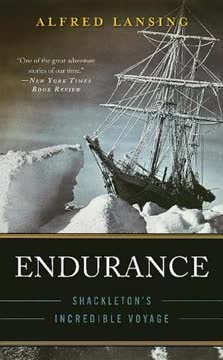
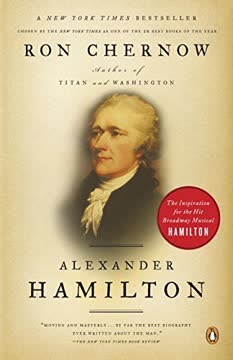

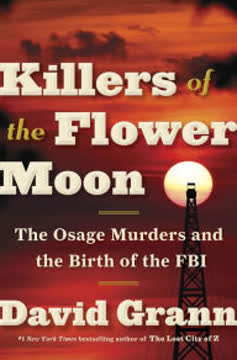
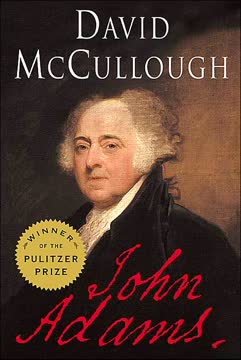
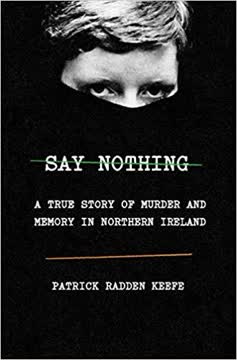
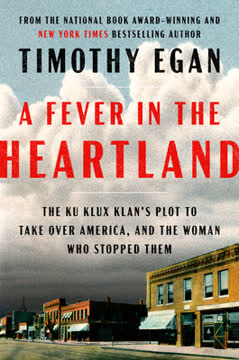

Download PDF
Download EPUB
.epub digital book format is ideal for reading ebooks on phones, tablets, and e-readers.
